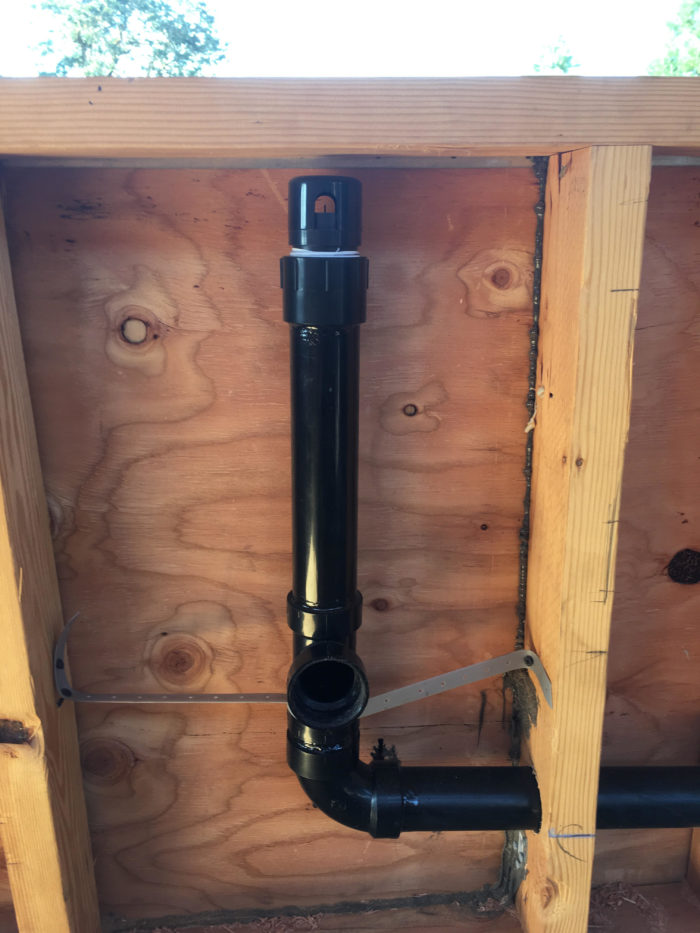The Significance of Ventilation in Building Plumbing Systems
The Significance of Ventilation in Building Plumbing Systems
Blog Article
This article on the next paragraphs relating to Essential Plumbing Vent Pipes: Understanding Their Role is definitely interesting. Check it out yourself and decide what you think about it.

Proper air flow in pipes systems is commonly neglected, yet it is essential for keeping the functionality and safety and security of your home's plumbing. Ventilation aids regulate atmospheric pressure, prevent the accumulation of unsafe gases, and ensure the effective elimination of waste. In this overview, we will explore the relevance of correct pipes ventilation, how it works, and the benefits it gives your plumbing system.
Understanding Ventilation in Plumbing
Ventilation in plumbing refers to the network of pipes that enable air to move via the drainage system. These vents serve numerous objectives, including managing atmospheric pressure within the pipes, stopping sewer gases from getting in the home, and assisting in the smooth circulation of wastewater.
How Air Flow Functions in Pipes Solutions
Air Pressure Law
Appropriate ventilation keeps balanced atmospheric pressure within the plumbing system. When water moves with pipelines, it displaces air. Without ample ventilation, this variation can create unfavorable stress, resulting in reduce drains or siphoning of water from traps, which can create undesirable odors to permeate right into the home.
Protecting Against Sewage System Gas Accumulation
One of one of the most important functions of pipes vents is to stop sewage system gases, such as methane and hydrogen sulfide, from accumulating within the home. These gases can position major health risks and are highly flammable. Vent pipes permit these gases to run away securely outdoors.
Helping in Waste Removal
Air flow aids in the effective removal of wastewater by preventing airlocks in the water drainage system. When air can move easily via the vents, it allows water and waste to move efficiently with the pipes, decreasing the risk of blockages and backups.
Sorts Of Pipes Vents
Key Stack Vent
The primary stack vent, likewise referred to as the air vent pile, is the main vent in a pipes system. It expands from the primary drain line up with the roofing, allowing gases to run away and fresh air to go into the system.
Branch Vent
Branch vents connect to the primary stack vent and offer private components, such as sinks, toilets, and showers. These vents make sure that each fixture has appropriate air flow to function appropriately.
Air Admission Valve (AAV).
An Air Admittance Shutoff (AAV) is a one-way valve that permits air to enter the plumbing system without the requirement for a typical air vent pipeline expanding through the roofing. AAVs are commonly used in improvements or locations where installing a standard vent is impractical.
Indicators of Poor Air Flow in Pipes.
Slow Draining Fixtures.
If your sinks, bathtubs, or toilets are draining pipes slowly, it could be a sign of bad ventilation. Insufficient air flow can develop a vacuum effect, making it difficult for water to drain pipes correctly.
Gurgling Appears.
Gurgling audios originating from drains are typically a result of air being drawn through water catches due to negative pressure in the pipelines. This is a clear indicator of inadequate air flow.
Undesirable Smells.
Sewer odors inside your home are a warning that your pipes system is not effectively ventilated. This might imply that sewage system gases are not being adequately aired vent outside, causing possibly unsafe conditions.
Usual Ventilation Blunders.
Insufficient Vent Sizing.
Making use of undersized vent pipes can result in bad air flow and pressure discrepancies in the system. It's vital to utilize vents that satisfy the particular needs of your pipes system.
Improper Vent Placement.
Positioning vents also far from the components they offer can minimize their effectiveness. Correct placement ensures that air can move freely and successfully with the system.
Disregarding Code Demands.
Building codes supply details standards for pipes ventilation. Neglecting these codes can cause a system that stops working to operate correctly and might bring about costly repair services or health hazards.
Benefits of Proper Ventilation.
Improved System Performance.
Correctly ventilated pipes systems run extra successfully, with less blockages, faster draining, and less strain on the pipes. This efficiency extends the lifespan of the plumbing system.
Improved Air Quality.
By avoiding sewer gases from entering your home, proper air flow adds to far better interior air high quality, making your living atmosphere healthier and more comfy.
Stopping Water Damage.
Adequate air flow assists prevent water from being siphoned out of catches, which can result in drain gases entering the home and causing water damage gradually.
Steps to Guarantee Correct Ventilation.
Consulting Plumbing Codes.
Always get in touch with local pipes codes when developing or changing your pipes system. These codes offer the necessary standards for appropriate venting and guarantee your system meets safety and security requirements.
Regular Examination and Maintenance.
Normal examinations can help recognize prospective ventilation concerns before they end up being major troubles. Maintenance jobs, such as cleaning vent pipelines and looking for blockages, are crucial for keeping the system in good working order.
Specialist Installation.
For new installments or major alterations, it's wise to hire a professional plumber. They have the proficiency to guarantee the air flow system is properly developed and installed according to code.
Verdict.
Correct ventilation is a crucial element of any plumbing system, guaranteeing that it works efficiently and securely. By recognizing the value of ventilation, acknowledging the indicators of poor air flow, and taking steps to maintain your system, you can stop pricey concerns and protect your home's air quality.
What is a Plumbing Vent and it's used for?All plumbing systems in residential and commercials construction have a plumbing vent. It doesn’t just vent unwanted odors from the drainage system to the outside; it actually serves an important purpose by supplying air to the system.
The plumbing drainage system is actually called a drainage, waste and vent (DWV) system. When water flows down the piping, an air supply (vent) is needed to allow the water to flow. Think of the vertical pipe as a drinking straw. If you plug the top end of a straw, liquid won’t drain from it.
The DWV system in your building consists of a series of pipes connected to each fixture; they extend above each fixture, and the system terminates at an open pipe that extends through the roof. This piping allows air into the system and prevents unbalanced pressures in the piping.
?The vent also prevents the system from drawing water out of a trap at the fixture with the characteristic “glug-glug-glug” as the drain gasps for air. Plumbing traps should drain smoothly and never “glug” or gasp for air.
If you have a drain that empties slowly or gurgles as it drains, this may indicate a venting problem. If you flush a toilet and the sink gurgles, there’s definitely a vent problem. It is good idea to have a Plumber check this.
https://www.ameliashomeinspection.com/blog/what-is-a-plumbing-vent-and-its-used-for

We had been shown that report about The Upsides of Proper Ventilation in Plumbing Design from a pal on our other website. Are you aware of another individual who is in the market for the topic? Feel free to promote it. Many thanks for being here. Return soon.
Call Today Report this page